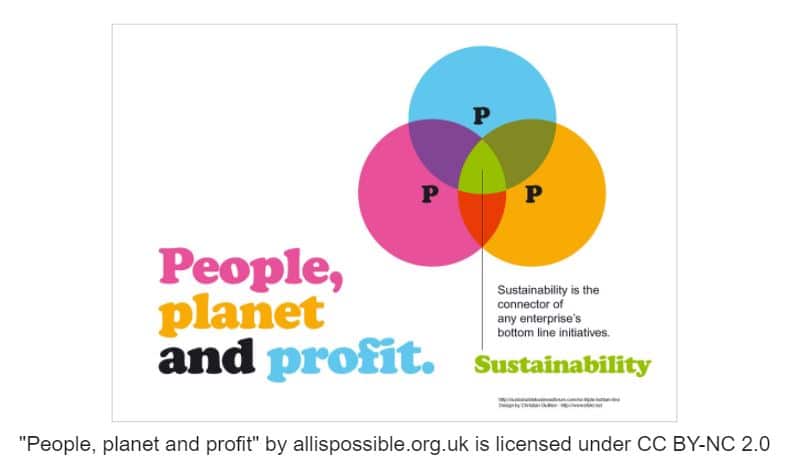Individuals trying to lead more eco-friendly lives often struggle daily with throwing things away. This dilemma is magnified for companies trying to implement green manufacturing practices. There is always the lingering thought that there could be another use for that object, or that someone else may need it. The industrial sector deals with waste in the form of scraps, damaged goods, and overstocked merchandise on a much larger scale than the individual. Thankfully, there’s a solution: instilling the importance of green manufacturing and best practices can help reduce waste in the first place and find solutions for the waste that is produced. But what is green manufacturing, how is it implemented in the industrial sector, and how do companies go about enacting more sustainable practices?
What is Green Manufacturing?
Manufacturing is the production of goods and can include:
- Plastic production
- Construction
- Electronics assembly
- Automotive industry
- And many more types of goods
As an industrial society, the United States owes 11% of its GDP to the manufacturing industries. However, industrial practices and production processes are also responsible for 33% of total energy consumption in the U.S., leading to a need for eco-friendly manufacturing practices.
Green manufacturing is a broad, all-encompassing term that can include many business practices meant to
- Reduce waste
- Increase the lifetime use of a product
- Reuse materials considered scraps or post-consumer waste
- And reduce energy and water usage
Green manufacturing can also be referred to as sustainable manufacturing, lean manufacturing, and environmental manufacturing. Green initiatives include making your products and production process more sustainable. Being sustainability is more than just environmental – it also includes economic and social initiatives, too. This is often referred to as the triple bottom line: people, planet, and profit.

Why Choose Green Manufacturing?
In 2020, the manufacturing sector specifically accounted for over 25% of total energy consumption in the U.S. It’s an alarming percentage, especially during a year in which manufacturing energy consumption was down and residential consumption was up due to the global pandemic. Simply put, manufacturing is a sector where a little bit of improvement can go a long way towards helping people, improving our planet, and even benefitting business.
Sustainable manufacturing processes help the health of both your employees and your business. Putting time into employee wellness programs and compensating workers fairly are just two measures that can help cultivate a positive and efficient workspace and create a workplace environment that employees want to stay and grow in.
The cost of manufacturing on the environment is enormous. With carbon emissions increasing at an astounding rate and nondurable goods and packaging and material accounting for large increases in municipal solid waste generation, doing your part to decrease your impact on the planet can only help. There are many ways to reduce your manufacturing company’s carbon footprint. By reducing inputs or finding more sustainable alternatives, companies can help preserve our limited natural resources.
There are clear marketing advantages to going green for businesses. Consumers are becoming more aware of the power their dollar has and are demanding more transparency and more sustainability in business practices. This demand is projected to increase, from transparency regarding materials sourcing to more structured Environmental, Social, and Governance (ESG) reporting. Businesses that can meet that demand already have an advantage over competitors. However, sustainability refers to the continuation of something in the long run, and every business owner should be aiming for that. Many green initiatives can save your business money, such as cutting down on your energy and water usage and finding ways to recycle overstocked and damaged goods.
Green Manufacturing: Best Practices
When it comes to the best practices for sustainable manufacturing, they can really vary by sector and industry. However, most manufacturing processes can be broken into three steps: input, process, and output. Focusing on these three steps and how they impact people, the planet, and profit can help any company map out best practices.
Input
Reduce or cut out non-renewable inputs and invest in researching more sustainable alternatives. This saves businesses money in the long run as the cost of raw materials such as rare precious metals or fossil fuels continues to rise. Consider where these inputs are coming from and how they benefit the product. Is there a closer alternative that will reduce costs and shipping time while also reducing emissions from the associated transportation and simplifying your supply chain?
Process
Making manufacturing processes more efficient can help cut down on energy and water usage, and using renewable forms of energy helps the environment now while saving you money on energy costs in the long term. Total productive maintenance (TPM) methods encourage constant upkeep and maintenance of the whole production line, increasing the lifetime of any machinery used and discouraging the usual take-make-waste cycle. Investing in eco-friendly factories is just one-way manufacturers can make a huge change for the good of the planet.
Output
Oftentimes in the manufacturing process, there are scraps, prototypes, damaged goods, minor QC failures, overstocked products, and other types of usable waste. Businesses have to pay to get rid of this, or even pay a premium to recycle it. Employing the services of companies like Just Make It Go Away that buy reject materials saves businesses money from landfill or recycling costs while also providing an environmentally-friendly alternative.
From simplifying the supply chain to creating a more efficient and energy-saving production line to donating or selling usable goods to Just Make It Go Away, there are lots of ways to get started reducing your negative environmental impact and making your manufacturing greener! Are you ready to start more green manufacturing in your business?

